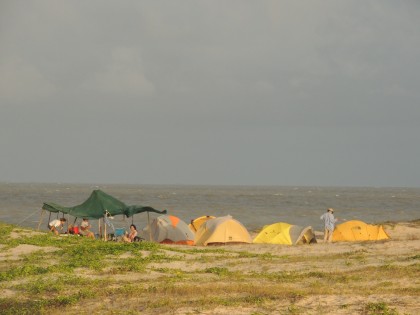
Despite the huge numbers of shorebirds using the area, Maranhão, Brazil has received only limited conservation and research attention outside of Brazil.
I recently returned from a field expedition there (above is a photo of our camp at a field site on Curupu Island, just outside of the capital city of Sao Luis).
Our goal was to recover and deploy migration tracking loggers on ruddy turnstones, red knot, black bellied plover, and willet to learn more about the global migration patterns of bird populations using the region. Maranhão harbors large proportions of the wintering populations of each of these species, as illustrated in the maps below.
These maps are from the pioneering work of Morrisson and Ross who took on the task of doing aerial counts of shorebirds along the entire coastline of South America in the 1980’s.
The area is a shorebird hotspot because it contains vast, highly productive estuaries along 500 km of coastline (that extend into the neighboring state of Pará) which comprise one of the largest tracts of mangroves in the western hemisphere. It is still in relatively pristine condition, with a low human population density and healthy marine resources that many local people use for subsistence living.
Much still needs to be learned about Maranhão, most importantly the current and emerging threats to the shorebirds and their habitat. The possibilities include an increase in shrimp farm development in the region (which destroys mangroves), mercury pollution from artisinal gold mining at upstream sites, and the unquantified impact of shorebird hunting by people living subsistence lifestyles.
Read more about the expedition at A Rube with a View.